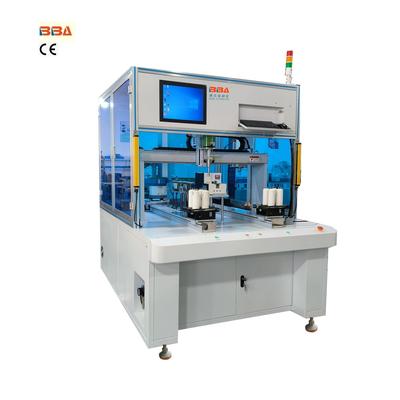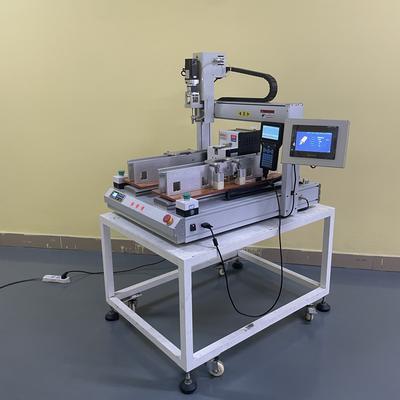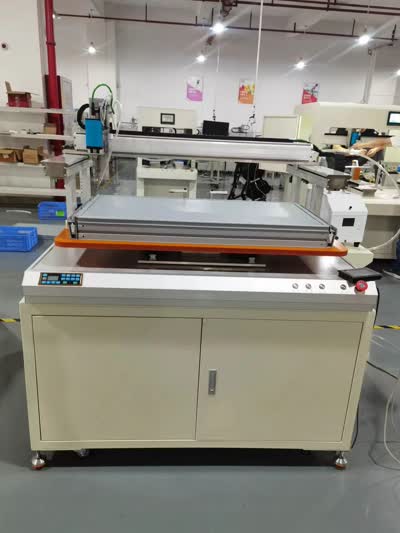Automated Screw Tightening Systems | How Robotic Screwdrivers Work
| Product Name | Applicable industries |
| Servo Screwdriver Robot | Automotive Electronics Assembly |

How Screw Tightening Automation Equipment Works
In modern manufacturing, efficiency, precision, and consistency are paramount. Automated screw tightening systems have become a cornerstone technology in assembly lines across various industries, from automotive and electronics to aerospace and consumer goods. These systems eliminate human error, increase throughput, and ensure every product meets exact quality specifications. But how do these sophisticated machines actually work? This article delves into the core principles and components that make screw tightening automation possible.
The Core Components of an Automated System
An automated screw tightening system is not a single tool but an integrated system of several key components working in harmony. At its most basic, the system consists of a screw presenter or feeder, a robotic arm or Cartesian robot, a precision torque tool (often an electric screwdriver), and a central control unit.
- Feeder/Presenter: This device holds a bulk supply of screws and orients them one-by-one into a precise position for the tool to pick up. Common types include bowl feeders, tape feeders, and step feeders.
- Robotic Actuator: This is the "arm" of the operation. It can be a multi-axis industrial robot for complex paths or a simpler linear (Cartesian) system for straightforward applications. Its job is to move the torque tool accurately to the target location.
- Torque Tool: This is the heart of the system. Modern automated tools are typically servo-electric screwdrivers. They provide exceptional control over torque and angle, which is critical for achieving a perfect clamp load.
- Vision System (often integrated): Many advanced systems include cameras to identify the exact hole position, verify the presence of a screw after tightening, and inspect for any defects.
- Controller: The brain of the operation. A programmable logic controller (PLC) or industrial PC orchestrates the entire process. It commands the robot's movement, triggers the feeder, and, most importantly, monitors and records the torque and angle data from every single screw tightened.
The Tightening Process: A Step-by-Step Breakdown
The operation is a seamless, high-speed cycle of precision movements. It begins with the controller sending a signal to the feeder, which presents a single, correctly oriented screw. The robotic arm then moves the torque tool, which has a magnetic or vacuum-based bit, to the pickup location to collect the screw.
Once the screw is secured, the arm moves to the programmed target point on the workpiece. The tool descends, inserts the screw, and begins the tightening process. The servo-electric driver is crucial here. It doesn't just spin until it can't anymore. It follows a precise tightening strategy, often called a "tightening curve."
The Strategy: The controller monitors the torque and rotation angle in real-time. For critical joints, the system may use a strategy like Torque-to-Yield or Angle-Control to ensure the bolt is stretched to its optimal tension without being over-torqued or stripped. This data is recorded for traceability and quality assurance, creating a complete log for every product assembled.
After the programmed torque and angle values are achieved, the tool reverses slightly to disengage the bit from the screw head. The robotic arm then retracts, and the cycle repeats for the next screw. This entire process happens in a matter of seconds, with relentless repeatability.
Key Advantages for Modern Manufacturing
The benefits of implementing automated screw tightening are substantial. Firstly, it guarantees unmatched consistency. Every screw is tightened to the exact same specification, eliminating loose fittings or damaged threads caused by human variability. Secondly, it dramatically increases production speed, operating far faster than a human operator and without fatigue.
Furthermore, it enhances traceability and data logging. The system records the torque and angle data for every screw, providing invaluable data for quality control and audit trails. This is essential for industries with strict safety and compliance standards. Finally, it reduces labor costs and frees skilled workers from repetitive tasks to focus on more value-added operations, while also minimizing the risk of work-related injuries like repetitive strain.
In conclusion, automated screw tightening equipment represents a perfect synergy of mechanical engineering, robotics, and data management. By automating this fundamental assembly step, manufacturers achieve a new level of quality, efficiency, and intelligence in their production processes, building better products with greater reliability.


